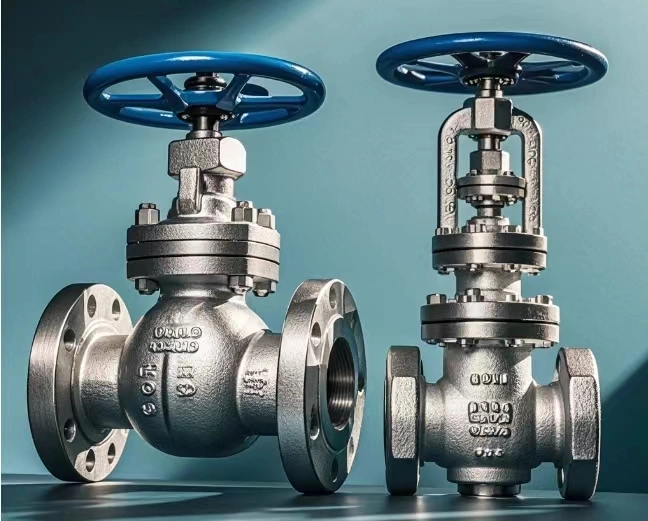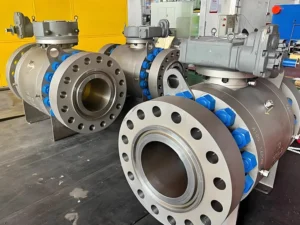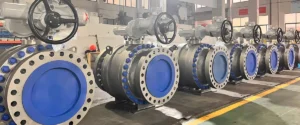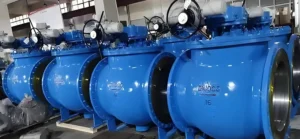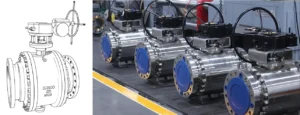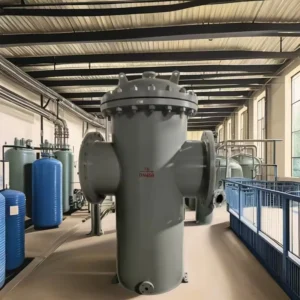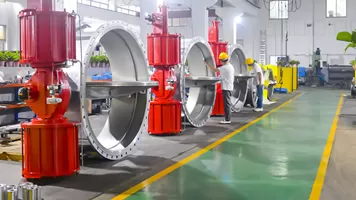In the industrial fluid control system, ball valves and gate valves are two very important types of valves. Although they both undertake the basic task of controlling the flow of fluids, there are significant differences in their design concepts, operating mechanisms, applicable environments, and responses to faults. This article will elaborate on these differences in detail to help deepen the understanding of the characteristics and application scenarios of these two types of valves.
Ball Valve: The Pioneer of Fluid Control in Modern Industry
The ball valve is a widely used valve in modern industry, favored for its compact structure, simple operation, and good sealing performance. The core component of the ball valve is a spherical body with channels. When the sphere rotates to align with the pipeline axis, the valve opens, allowing fluid to pass through; when rotated 90 degrees to a vertical position, the valve closes, cutting off the fluid flow.
Features of Ball Valves:
- Efficient Fluid Control: Ball valves offer a smooth flow path, reducing fluid resistance and pressure loss.
- Rapid Opening and Closing: A 90-degree rotation can complete the opening or closing of the valve.
- Diverse Material Options: Ball valves can be made from a variety of materials to adapt to different media and temperature conditions.
- Precise Regulation: Ball valves can achieve precise flow control, suitable for systems that require fine regulation.
Gate Valve: The Classic Choice for Industrial Fluid Control
Gate valves are another type of valve in the industrial field, known for their simple structure and reliable sealing. Gate valves control the flow of fluids by raising and lowering a gate plate, with a tight combination between the gate plate and the valve seat forming a seal.
Features of Gate Valves:
- Simple and Reliable Operation: Gate valves have a simple structure, easy to maintain, suitable for systems that require long-term stable operation.
- Good Sealing Performance: The design of gate valves ensures good sealing performance even under high pressure.
- Suitable for High Flow Rates: The construction of the gate plate allows it to handle large fluid flow rates, suitable for main pipelines.
- Cost-Effectiveness: In some applications, gate valves may be a more cost-effective choice.
Differences Between Ball Valves and Gate Valves
Functional Differences
The main difference between ball valves and gate valves lies in their fluid control mechanisms. Ball valves control fluid flow by rotating the sphere, while gate valves do so by raising and lowering the gate plate.
Operational Differences
The operation of ball valves is more convenient, with a quick rotation achieving full opening or closing of the valve. Gate valves may require more effort to operate the gate plate.
Structural Differences
Ball valves have a compact structure suitable for installation environments with limited space; gate valves, due to their gate-raising and lowering design, are usually larger in volume and suitable for occasions with no high space requirements.
Application Differences
Ball valves are suitable for occasions that require rapid opening and closing and precise control of flow rates, while gate valves are more suitable for long-term continuous operation systems.
Maintenance Differences
Due to their simple structure, ball valves are relatively easy to maintain; gate valves may require more frequent maintenance to ensure sealing performance.
Installation and Maintenance of Valves
The correct installation and regular maintenance of valves are crucial to ensure their long-term stable operation. When installing valves, it is important to ensure that the specifications of the valves match the requirements of the pipeline system, taking into account the properties of the fluid and operating conditions. After installation, regular checks of the valve’s sealing performance and wear of the operating parts should be conducted, with replacement or repair when necessary.
Installation Considerations:
- Confirm that the valve’s flow direction mark is consistent with the direction of fluid flow.
- Ensure that the valve is installed in a position that is easy to operate and maintain.
- Follow the manufacturer’s installation guides and recommendations.
Maintenance Strategies:
- Regularly check the valve’s seals to ensure they are intact.
- Check the valve’s operating mechanism to ensure it is flexible and reliable.
- Clean the exterior of the valve to prevent corrosion and accumulation of dirt.
Technological Development and Innovation
With the development of industrial automation and intelligence, valve technology is also continuously advancing. Modern valves may integrate advanced sensors and control units to achieve more precise process control. In addition, some high-end valves use special materials and coatings to improve corrosion resistance and wear resistance, extending the service life of the valves.
Intelligent Valve Systems:
- Sensor Integration: Real-time monitoring and adjustment of fluid pressure, flow, and temperature.
- Remote Control: Remote operation of valves through wireless or wired networks.
- Data Analysis: Collect operational data for fault diagnosis and performance optimization.
Material Science:
- High-Performance Alloys: Used for valves in extreme temperature and pressure conditions.
- Surface Treatment Technology: Improves the valve’s corrosion and wear resistance.
Conclusion
The choice between ball valves and gate valves should be based on specific industrial application requirements, including the characteristics of the fluid, the system’s pressure and flow rate requirements, the frequency of operation, and the convenience of maintenance. As industrial technology advances, the design and materials of valves are also continuously improving to meet a wider range of industrial application needs.
Understanding the characteristics and applicability of different valves is crucial to ensure the safe, reliable, and efficient operation of the system. The correct choice of valves can significantly improve the efficiency of industrial processes, reduce maintenance costs, and ensure the safety of operators. With technological progress, future valves may integrate more intelligent functions, such as remote monitoring and automatic diagnostics, to further enhance the performance of industrial fluid control systems.
Valve manufacturers and engineers will continue to explore new materials, designs, and technologies to improve the performance and reliability of valves. At the same time, attention to environmental protection and sustainable development will also promote the development of the valve industry towards more environmentally friendly and efficient directions. With the continuous development of these trends, valves will play a more critical role in ensuring industrial safety, improving energy efficiency, and promoting environmental friendliness.


